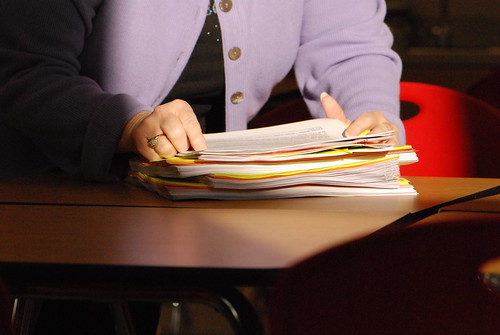Getting started as a sub
By Mary Bigelow
Posted on 2011-06-09
 I recently graduated from a teaching program with a biology certification. With the current economic situation, I’m not sure I’ll get a full-time teaching position. What should I know about substituting?
I recently graduated from a teaching program with a biology certification. With the current economic situation, I’m not sure I’ll get a full-time teaching position. What should I know about substituting?
—Alex, Chattanooga, TN
Substitutes are underappreciated members of the education community. They get pre-dawn phone calls with requests to appear that day. They can be the target of students’ jokes and misconceptions. They may show up in a classroom to find no plans or resources indicating what the teacher expects of them. They’re not sure where to park or where to sit in the teachers’ lunchroom. And yet they’re expected to maintain order and provide learning activities.
Many teachers start their careers as substitutes. Substitutes with experience in a school are often considered when a long-term or full-time position becomes available. To get on the substitute list, you’ll probably go through an interview or screening process and be asked to provide copies of appropriate clearances and certificates.
If you’re unfamiliar with a school, check out the website before you sub there the first time. Learn the names of the principal and the office staff. Download a copy of the student handbook, mark the bell schedule, building map, and school rules. Create a file for each school (including its address and driving directions) and have a bag ready for those early morning calls. Include a few extra pencils, a notebook or your laptop, a coffee mug and/or water bottle, and change for the vending machines. As you find or develop lesson ideas and resources, add them to the bag.
Arrive early if you can, and be sure to look professional. You’ll probably be given a guest badge to wear; you could also create a permanent nametag for yourself (and keep in your bag). Some schools have procedures in place to welcome substitutes, show them to the classroom, and provide a set of resources, including a guest login to the network. But others do not, so be ready to ask a lot of questions.
At the end of the day, leave a report for the teacher (and keep a copy for yourself) indicating the activities you did, a list of absentees, any student issues, and commendations for students who were cooperative and on-task for each period. If you deviated from a provided lesson plan, explain your rationale. Stop at the office on the way out to return you guest badge and thank the principal for the opportunity.
In an ideal situation, the teacher knows when he or she will be out of the classroom (for a conference or planned personal event) and provides detailed plans for the class periods, a seating chart, a bell schedule, and a school map. Other times, the teacher has to be out of the classroom for a sudden illness or personal emergency. The teacher may have an “emergency” folder in the desk for these situations. In the worst-case scenario, there are no plans or resources. Whatever the situation, it’s your responsibility as a substitute to provide (or try to provide) a productive learning environment.
Even though you’re a credentialed science teacher, you may feel uncomfortable doing a lab activity with the students, especially if it involves chemicals, live specimens, flames, or projectiles. You may not be familiar with the teacher’s safety rules, his or her lab routines, and the classroom’s safety equipment. In this case, do an alternate activity and explain in your report why you did so.
If there are no plans, or if the plans say “study hall” or “video,” you’ll need to have a few tricks up your sleeve to keep students focused. As a beginning teacher, you’re still in the process of developing a repertoire of strategies and activities. Use the articles in NSTA journals and online resources for ideas. Keep a folder of ideas in your bag and indicate when and where you used them.
Two of my favorite non-lab activities relate to vocabulary. These can be used in any subject with any grade level. Collect the students’ work to share with the teacher.
- Word Splash—Using a prepared set of words or a list that the students generate (perhaps from a current event or a picture), teams of students write sentences that include two or more of the words. Ask the teams to choose two to three of their “best” sentences to share with the whole class to debrief.
- Word Sort—Give word lists to teams of students to categorize with a rationale of their thinking.
From the teacher’s perspective, a good substitute is worth his or her weight in gold. It’s reassuring to know that lesson plans and routines will be followed. When I taught seventh grade science, I let my principal know “Mr. H” was my preferred sub. He was a former science teacher who kept students on-task in a friendly manner. When I returned, the students would grumble how Mr. H. made them work!
Photo: http://www.flickr.com/photos/judybaxter/3310525306/sizes/z/in/photostream/
Disclaimer: The views expressed in this blog post are those of the author(s) and do not necessarily reflect the official position of the National Science Teaching Association (NSTA).


